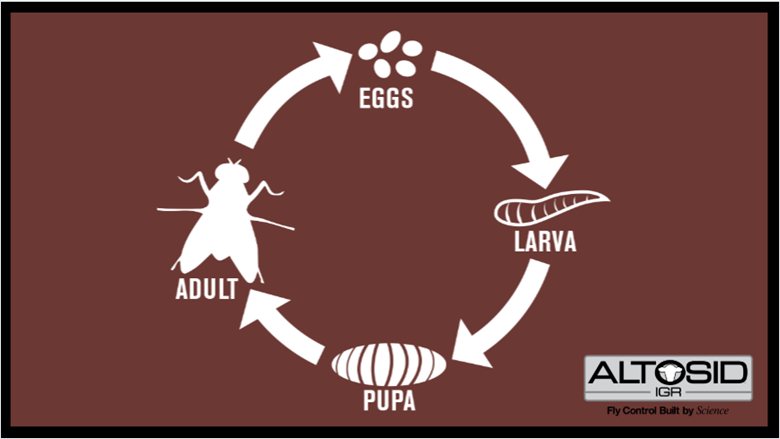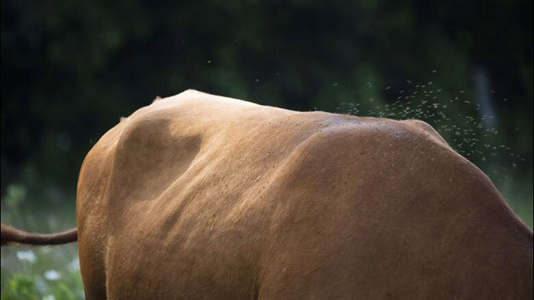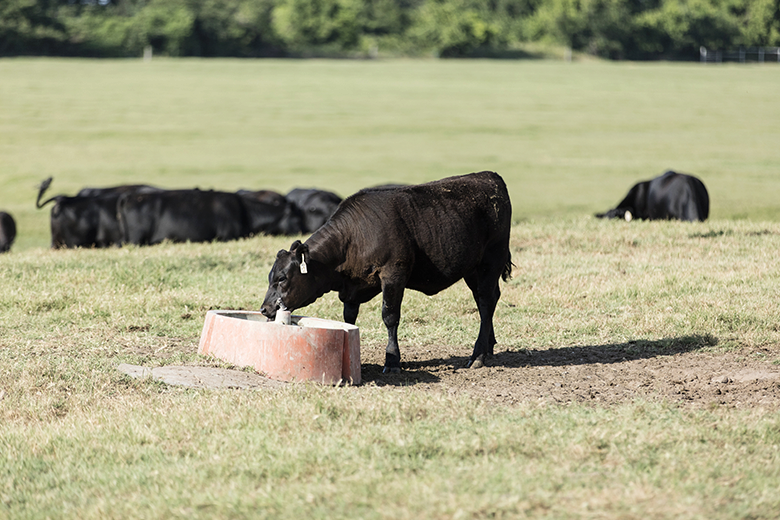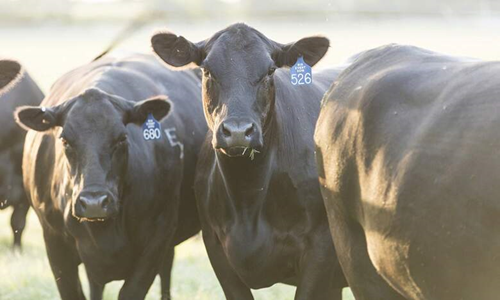
Found on the backs of cattle, horn flies are the most pervasive and costly external parasites of cattle in North America. These pests take up to 40 blood meals a day with piercing mouthparts. The stress caused by horn flies causes interrupted grazing patterns and reduced weight gains in cattle. Using a fly management program to limit flies on cattle will help promote herd health.
To understand how to effectively control this biting pest, it helps to understand a typical horn fly life cycle:
Day Zero:
Female adult flies leave the backs of cattle briefly to lay their eggs in fresh manure.
Day 1-2:
Eggs hatch into horn fly larvae.
Day 3-8:
Larvae molt into pupae.
Day 9-17:
Pupae molt into adults.
Day 18-40:
The adult horn fly emerges as a small, black insect, approximately 4 millimeters long. The adult can live anywhere from 2 to 4 weeks.
While the total life span of horn flies is slightly longer than one month, their populations expand quickly, causing infestations. In untreated herds, fly infestations can increase rapidly to upwards of 4,000 flies per animal.
Altosid® IGR is a feed-through larvicide that breaks the life cycle of horn flies to prevent adults form emerging. This feed-through fly control uses the active ingredient to interrupt the transformation from pupae to biting adult flies.
While you will never eliminate all flies on cattle, maintaining a fly control program will help limit populations to less than 200 flies per animal, the economic threshold established for horn flies on beef cattle. Altosid® IGR is available in mineral blocks, tubs, liquid feed supplements and as a premix that can be top dressed or mixed into feed.



